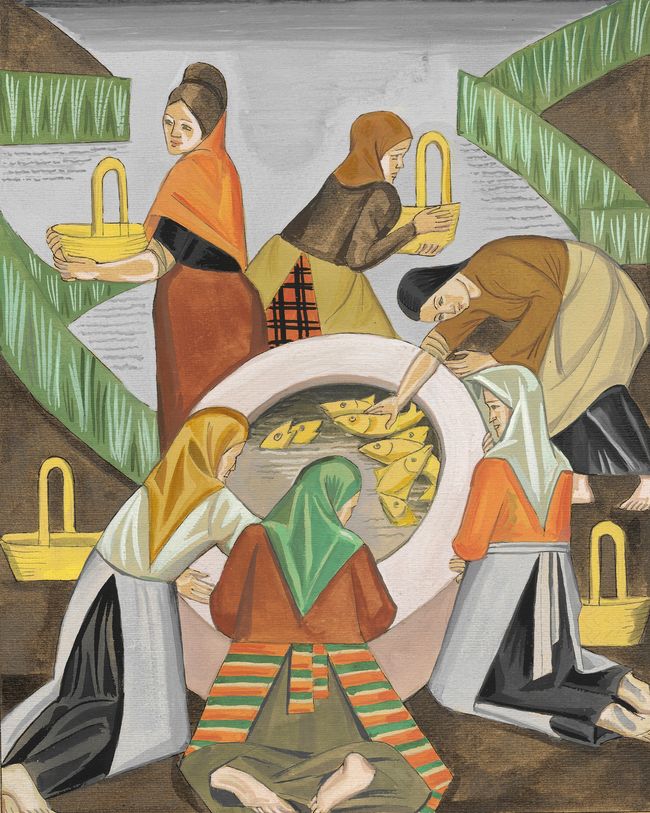1913 - 1937
Neo-Byzantine

description
Neo-Byzantine
Neo-Byzantine was an art movement that originated in Ukraine; its founder was Mikhail Boychuk. It is represented by easel and monumental painting. The movement ended due to the executions of “Boychukists” in the 30s of the twentieth century.
It should be noted that the development of Neo-Byzantine is closely related to church architecture, and also showed itself in the press (woodcut, book graphics), ceramics, sculpture, weaving, Ukrainian puppet theater and stained glass.
Neo-Byzantine paid special attention to the icon, which is influenced by such fashionable movements of that time as Cubism, Fauvism, Art Nouveau, and Post-impressionism. For example, figures acquire cubist broken planes (Prophet Eliyah, 1913. Mikhail Boychuk).
Key ideas:
– the concept of the synthesis of neo-Byzantine arts is based on the design features of the Byzantine style and Old Russian painting, the search for a new aesthetic with reference to the past. The main task is the philosophical understanding of the problems of being and the role of a human being in it;
– the stylistic characteristics of the Byzantine style are preserved – leanness and lengthening of the proportions of the human body, the presence of church attributes and the absence of a specific light source. Some works have an aerial perspective.
description
A Ukrainian artist, painter and graphic artist. He was the founder of the monumental art of Ukraine, during the 20th century. He worked in the styles of Expressionism, primitivism and socialist realism. The teacher of the rural school where young Mykhaylo studied, noticing the talent of the guy, wrote about him in the newspaper with the goal of finding a mentor for the beginning artist. The artist from Lvov, Julian Pankevich, took Mykhaylo under the patronage. He taught him at his workshop, went with him for six months to Vienna to get acquainted with the museums. He was the leader of a group of like-minded people, called "boychukists" in the history of the fine arts. A member of the Scientific Society named after T. Shevchenko, Association of Revolutionary Art of Ukraine, one of the founders of the Ukrainian Academy of Arts. One of the representatives of the Executed Renaissance of Ukraine.
1882 - 1937
